- Link to facebook
- Link to linkedin
- Link to twitter
- Link to youtube
- Writing Tips

How to Write an Academic Book Review
4-minute read
- 13th September 2019
For researchers and postgraduates , writing a book review is a relatively easy way to get published. It’s also a good way to refine your academic writing skills and learn the publishing process. But how do you write a good academic book review? We have a few tips to share.
1. Finding a Book to Review
Before you can write a book review, you need a suitable book to review. Typically, there are two main ways to find one:
- Look to see which books journal publishers are seeking reviews for.
- Find a book that interests you and pitch it to publishers.
The first approach works by finding a journal in your field that is soliciting reviews. This information may be available on the journal’s website (e.g., on a page titled “Books for Review”). However, you can also email the editor to ask if there are book review opportunities available.
Alternatively, you can find a book you want to review and pitch it to journal editors. If you want to take this approach, pick a book that:
- Is about a topic or subject area that you know well.
- Has been published recently, or at least in the last 2–3 years.
- Was published by a reputable publisher (e.g., a university printing press).
You can then pitch the review to a journal that covers your chosen subject.
Some publishers will even give reviewers access to new books. Springer, for example, has a scheme where reviewers can access books online and receive a print copy once a review is published. So this is always worth checking.
2. Follow the Style Guide
Once you know the journal you want to write for, look for the publisher’s style guide. This might be called the “Author Instructions” or “Review Guidelines,” but it should be available somewhere on the publisher’s website. If it is not obviously available, consider checking with the editor.
Find this useful?
Subscribe to our newsletter and get writing tips from our editors straight to your inbox.
When you have found the style guide, follow its instructions carefully. It should provide information on everything from writing style and the word count to submitting your review, making the process much simpler.
3. Don’t Make It About You!
You’d be surprised how often people begin by summarizing the book they’re reviewing, but then abandon it in favor of explaining their own ideas about the subject matter. As such, one important tip when reviewing an academic book is to actually review the book , not just the subject matter.
This isn’t to say that you can’t offer your own thoughts on the issues discussed, especially if they’re relevant to what the author has argued. But remember that people read reviews to find out about the book being reviewed, so this should always be your focus.
4. Questions to Answer in a Book Review
Finally, while the content of a review will depend on the book, there are a few questions every good book review should answer. These include:
- What is the book about? Does it cover the topic adequately? What does the author argue? Ideally, you will summarize the argument early on.
- Who is the author/editor? What is their field of expertise? How does this book relate to their past work? You might also want to mention relevant biographical details about the author, if there are any.
- How does the author support their argument? Do they provide convincing evidence? Do they engage with counterarguments? Try to find at least one strength (i.e., something the book does well) and one weakness (i.e., something that could be stronger) to write about.
- As a whole, has the book helped you understand the subject? Who would you recommend it to? This will be the concluding section of your review.
If you can cover all these points, you should end up with a strong book review. All you need then is to have it proofread by the professionals .
Share this article:
Post A New Comment
Got content that needs a quick turnaround? Let us polish your work. Explore our editorial business services.
3-minute read
What Is a Content Editor?
Are you interested in learning more about the role of a content editor and the...
The Benefits of Using an Online Proofreading Service
Proofreading is important to ensure your writing is clear and concise for your readers. Whether...
2-minute read
6 Online AI Presentation Maker Tools
Creating presentations can be time-consuming and frustrating. Trying to construct a visually appealing and informative...
What Is Market Research?
No matter your industry, conducting market research helps you keep up to date with shifting...
8 Press Release Distribution Services for Your Business
In a world where you need to stand out, press releases are key to being...
How to Get a Patent
In the United States, the US Patent and Trademarks Office issues patents. In the United...

Make sure your writing is the best it can be with our expert English proofreading and editing.
An official website of the United States government
The .gov means it’s official. Federal government websites often end in .gov or .mil. Before sharing sensitive information, make sure you’re on a federal government site.
The site is secure. The https:// ensures that you are connecting to the official website and that any information you provide is encrypted and transmitted securely.
- Publications
- Account settings
Preview improvements coming to the PMC website in October 2024. Learn More or Try it out now .
- Advanced Search
- Journal List
- J Chiropr Educ
- v.24(1); Spring 2010
How to Write a Scholarly Book Review for Publication in a Peer-Reviewed Journal
Alexander d. lee.
Canadian Memorial Chiropractic College
Bart N. Green
Naval Medical Center, San Diego, National University of Health Sciences
Claire D. Johnson
National University of Health Sciences
Julie Nyquist
University of Southern California
Alexander Lee is with the Department of Graduate Education and Research Programs, Canadian Memorial Chiropractic College. Bart Green is with the Chiropractic Division, Department of Physical and Occupational Therapy, Naval Medical Center, San Diego, the Department of Publications, National University of Health Sciences, and is Editor-in-Chief for The Journal of Chiropractic Education . Claire Johnson is with the Department of Publications, National University of Health Sciences. Julie Nyquist is with the Division of Medical Education, Keck School of Medicine, University of Southern California.
To describe and discuss the processes used to write scholarly book reviews for publication in peer-reviewed journals and to provide a recommended strategy and book appraisal worksheet to use when conducting book reviews.
A literature search of MEDLINE, EMBASE, CINAHL, and the Index to Chiropractic Literature was conducted in June 2009 using a combination of controlled vocabulary and truncated text words to capture articles relevant to writing scholarly book reviews for publication in peer-reviewed journals.
The initial search identified 839 citations. Following the removal of duplicates and the application of selection criteria, a total of 78 articles were included in this review including narrative commentaries ( n = 26), editorials or journal announcements ( n = 25), original research ( n = 18), and journal correspondence pieces ( n = 9).
Discussion:
Recommendations for planning and writing an objective and quality book review are presented based on the evidence gleaned from the articles reviewed and from the authors' experiences. A worksheet for conducting a book review is provided.
Conclusions:
The scholarly book review serves many purposes and has the potential to be an influential literary form. The process of publishing a successful scholarly book review requires the reviewer to appreciate the book review publication process and to be aware of the skills and strategies involved in writing a successful review.
Introduction
In the current publishing market, there is no shortage of books written for the busy health care practitioner or academic professional. 1 The scholarly book reviewer plays an important role in informing readers about new books and guiding their reading preferences as they explore the Internet and large catalogues provided by publishers. With the expectations of the many stakeholders in the book review process (readers, authors, journal editors, and publishers) mounted on the reviewer's shoulders, the production of a well balanced, engaging, and informative critique, within the confines of a predetermined word limit, is no simple task. Some book review editors describe book reviewing as a fine art. 2
The scholarly book review is considered by some to be a form of academic writing that serves to describe and critically evaluate the content, quality, meaning, and significance of a book. 3–6 A well constructed book review can provide a thoughtful perspective and will be appreciated by all; however, “…a bad review blows up in your face, not just in the author's.” 7 Many problems identified in poorly conducted book reviews can be attributed to the poor evaluative and writing skills of the reviewer. 8 However, sometimes these problems are rooted in the book reviewer's lack of understanding of portions of the book review process. 7 An appreciation of the purpose and significance of all aspects of the book review process can provide the book review author with a wider perspective to employ when crafting a book review.
In the biomedical literature, there are a number of expert opinion pieces that describe strategies for evaluating books and writing book reviews. 2 , 5 , 6 , 9–14 However, we were unable to find an evidence-based source to assist authors when writing a book review. Thus, we conducted a structured literature search and narrative review of the literature to equip the book reviewer with an evidence-based understanding of all aspects pertaining to the book review process. This article provides an amalgamation of recommendations and a helpful worksheet to use when conducting book reviews.
A literature search was conducted in June 2009 using the following databases: MEDLINE (1950– 2009) and EMBASE (1980–2009) through OVID Publishing, CINAHL Plus with Full Text (1937– 2009) through EBSCO Publishing, and the Index to Chiropractic Literature (2000–2009). The search strategy used a combination of controlled vocabulary from the respective databases and truncated text words. All terms from the controlled vocabularies were exploded and searched as major concepts when available. Reference lists of the retrieved studies were scanned to identify any articles that may have been missed from the literature search. A full search strategy is provided in Figure Figure1 1 .

The search strategies used to obtain articles for this report.
Articles retrieved from the search were screened using abstracts and citations. In instances in which the article topic was unclear, the full text was retrieved. Article screening and selection was conducted by the primary author (ADL). Selection criteria for articles to be included in the review were that they must have been published in a peer-reviewed journal and reported on one or more of the following criteria: strategies for conducting scholarly book reviews, thematic issues related to the publication of scholarly book reviews, or recommendations on academic writing of which a section pertained to writing scholarly book reviews.
Articles that met the inclusion criteria were descriptively analyzed by the primary author (ADL) and the data extracted included: author(s), publication type, and narrative information concerning scholarly book reviews and their publication. To generate recommendations for conducting book reviews, the authors' personal experiences writing book reviews and acting as journal editors were used to supplement the evidence gleaned from the articles included in this review.
The initial search yielded 839 citations. After duplicate citations were removed and selection criteria were applied, a total of 76 articles were identified as being relevant for this report. Scanning of reference lists within each article yielded an additional 10 articles. Despite efforts made to contact the sources of eight publications, these articles were irretrievable due to lost holdings from accessed libraries and cessation of journal publication. Therefore, a total of 78 articles 1–78 were included in this review. The articles included were classified into four groups according to their publication formats: 1) narrative commentaries ( n = 26), 2 , 4–7 , 9–14 , 47–61 2) editorials or journal announcements ( n = 25), 1 , 3 , 15–37 3) original research ( n = 18), 8 , 62–78 and 4) journal correspondence ( n = 9). 38–46
Stakeholders and Purpose of the Book Review
The scholarly book review serves many purposes and is best appreciated by understanding the perspectives of the stakeholders involved. The primary audience for a book review is the journal's readership. Book reviews are an excellent vehicle to inform readers about new books in the marketplace. 27 , 52 Books are relatively expensive and scholars have limited time to commit to reading. Thus, journal patrons may rely upon the book review's evaluative purpose to guide their reading preferences. 11 , 14 Readers need to be informed of new, innovative, and ground-breaking books while being warned of books of poor quality and those that may not relate to their area of interest. 2 The book review can also increase a reader's scope by introducing books that a reader may not otherwise consider reading. 2 , 14
Interestingly, the authors of the books under review may be the most avid readers of book reviews. 10 , 18 Authors have invested much time and effort into writing their books, and it is not surprising that an author would be curious about how other scholars perceive their books. The reviewer has the opportunity to provide the author with the recognition or appreciation they deserve or to provide suggestions for any faults identified in the final product. 23 , 43 Therefore, the book review can play a large role in influencing the development of future editions. 18
Publishers have a vested interest in book reviews because they are an indirect form of advertising and have the potential to influence book sales. 23 While this review did not identify a study that has evaluated the effect of book reviews on book sales, publishers continue to send review copies of their books to journal editors with the prospect of obtaining a book review. 50 In 1983, Morton 64 obtained survey data from 15 publishers. All publishers surveyed believed book reviews had a positive effect on sales to physicians, and each of the publishers in this study distributed review copies to medical journals in the hopes of having a review appear in one or more of the prestigious journals. Publishers may use book reviews to determine if a book is worthy of a future edition, whether changes need to be made for a future edition, and whether the author is worthy of another book contract. 10 , 58 The contents of a favorable review may be used in promotional materials and book reviews can be used for market research for the planning of future titles. 10 , 32
It has been suggested that librarians use book reviews in the selection process for acquiring library holdings. 10 , 60 , 64 , 65 , 68 , 77 Chen 68 cited an average time lag of 10.43 months from book release to book review publication, and Morton 64 identified publication time lag and inadequate book review indexing as limiting factors for the use of book reviews as selection tools. Book reviews may have an indirect effect on library selection by the recommendations of patrons and faculty for book selection. In 1986, Martin 65 surveyed 136 medical acquisition librarians and found that book reviews ranked seventh on a list of 10 selection aids used for book selection by medical librarians and concluded that reviews were often used in conjunction with other selection tools for book selection. Some experts have suggested that book reviews may serve more as aids against which librarians may check their holdings for titles missed or as a means for identifying very important or poor titles. 68 , 74 Whether book reviews are used to determine library holdings is debatable; however, librarians read them and may serve as book reviewers themselves. 77
Lastly, the book review serves several purposes for the reviewers. Publishing a scholarly book review allows the reviewer to contribute to the professional literature by acting as an entrusted critic with the responsibility of informing the readership of seminal works and warning it of inaccurate scholarship. 32 , 61 Publishing book reviews is also an exercise of self-education. Many reviewers welcome the opportunity to stay current by reading a newly released text and enjoy practicing their critical faculties. 50 Academic authorities have proposed that writing a book review may be an excellent first publication experience for the novice writer. 4 , 5 , 12 , 14 , 19 , 30 , 31 , 59 For experienced book reviewers, however, it may be their altruistic commitment to scholarship and the honor of being asked to review a book that may motivate them. 61
Book Review Publication Process
The book review process starts and is driven, to a large extent, by the publisher. 10 , 32 When review copies of new books are available, publishers send review copies to the staff of relevant journals in hopes that the book will be reviewed. Due to the overwhelming number of books sent to journals, not all books received are reviewed. Often the selection of books reviewed is made in accordance to a journal's aim, scope, and readership. 57 Once a book is selected for review, the book review editor must match the book with a qualified reviewer. 9 , 22
Most book reviews appearing in print are commissioned—meaning that book reviewers are invited by the book review editor to conduct the review. 11 , 22 , 36 Book reviewers are typically not paid for their work, but often get to keep the book once they have completed their review. 19 , 25 , 30 , 52 , 59 Therefore, editors tend to rely on a core group of book reviewers with different areas of expertise who have agreed to act in this capacity. Occasionally, the editor will invite a notable expert in the field to review a book. The ideal book reviewer has been described by Johnson 10 as someone who has published himself or herself in the field of concern. It is important that the author is familiar and well read on the topic. Being a specialist or an authority in one's field is an asset, but may not be a necessity. A few editorials and narrative commentaries mention that it is often advantageous to have reviews written by nonexperts who represent the intended audience of the book under review. 4 , 6 , 11 , 22 However, if the book is written for a specialist audience, sufficient knowledge is required to properly review the material. 9 , 11 , 12 , 30
Commissioned reviews are preferred by most editors because it is easier to ensure consistency with journal policy and safeguard from conflict of interest. 11 , 22 , 36 If the majority of reviews are invited, how does one become a reviewer? Occasionally journals will advertise for book reviewers. 6 , 10 , 12 , 26 The majority of experts on book reviewing recommend that interested potential book reviewers contact the book review editor of a journal to express their interest. This should be followed up by sending a curriculum vitae with a cover letter outlining one's area(s) of expertise and the area(s) in which one would like to serve as a reviewer. 11 , 12 , 30 It may be wise to send a portfolio of previously published book reviews and scholarly articles. 58 Unsolicited reviews, while not common, may be accepted by some journals if they are well written. 10 , 12 , 36 , 55 If one is interested in writing an unsolicited review, most authorities advocate contacting the editor(s) of the journal in question prior to writing a review. 10 , 12 , 36
Once an invitation has been extended by the journal editor, the reviewer must decide if he or she is an appropriate match for the book in question. 10 Professional ethics require that reviewers decline an invitation if their objectivity is compromised or if they are not qualified to conduct the review. 8 , 9 Reasons for declining the invitation may include instances when the reviewer has a personal relationship with the author, 2 is being published or is seeking to be published by the same publisher, is not representative of the intended audience, or will be unable to meet the deadline. 9 , 58 Certain journal editors mention that it is easier to handle an initial refusal than to navigate the ramifications of the aforementioned issues. 12 , 36 If the invitation is declined, it is common courtesy for the invited to suggest another potential reviewer and make arrangements to return the book if it is already in possession. 2 , 12
Accompanying the invitation to conduct the book review is a submission deadline that usually ranges from 1 to a few months. 4 , 14 , 19 Research on the time lag from book release to the publication of its review highlights the importance of conducting the review in a timely manner. 64 , 65 , 68 Book review editors have suggested that if the review cannot be completed by the deadline, the book should be sent back to the publisher so it can be reviewed promptly by another qualified individual. 4 , 12 Conducting a high-quality review within the allotted time frame will ensure subsequent invitations to conduct book reviews. 11 , 14
When the completed book review has been submitted, the editor reserves the right to edit or reject the review. 24 It should be noted that book reviews are edited but are not customarily peer reviewed. 50 , 60 Since many journals are not published monthly, it may take up to a year or longer for the review to appear in print. 58 Once published, the journal will sometimes send a copy of the book review to the book publisher.
Appraising the Book
Reading a book for the purposes of generating an informative critique necessitates a planned appraisal strategy. As a first step, the reviewer should research the author's qualifications and previous contributions to the topic area to determine the author's authority. 4 , 5 , 9 , 13 If it is obvious the author is not sufficiently qualified, it may be appropriate to comment on this in the review. Before reading the book in depth, one should briefly skim the book to orient oneself to the organization, layout, and visual appeal. Note the type of book one is reviewing because different methods may be used to review different works. 2 , 12 For example, the strategy for reviewing a new edition of a textbook will require an evaluation of any changes made from previous editions, whereas the assessment of a compilation of conference proceedings may focus on the organization and ease of locating abstracts. 2
The majority of articles included in this report highlight the importance of reading the preface and introduction of the book prior to reading its content. 2 , 4−6 , 9 , 12 , 14 , 52 These sections state the author's intentions, aims, and purpose for writing the book. Most importantly, these two sections will define the intended readership. It is important to judge the book by its aims and objectives and evaluate it from the perspective of the intended readership. 5 , 6 , 14 , 52 A key question to ask is whether the contents are appropriate for the readership level. 2 , 6 , 14 , 58 Book reviewers can error by judging a book by their own aims and objectives and by criticizing authors for something that was explained in the preface. 6 , 7 , 11
Another section of a book that warrants a book reviewer's attention is the table of contents. It provides the reviewer with information about the organization of the book, an overview of its contents, and the development of the topics to be discussed. 2 , 5 , 12 This section can be used to determine if all relevant topics were included or if any key topics were overlooked. 4 , 5
Once oriented to the preface, introduction, and table of contents, the reviewer now has a setting and perspective to appraise the book. The book should be read carefully, taking notes while reading, as any praise, arguments, criticisms, or conclusions made in the review should be substantiated. 5 , 52 The book should be evaluated on a variety of items such as accuracy, completeness, readability, and relevance. 3 , 5 , 11 A book appraisal worksheet is provided in the appendix (also online at www.journalchiroed.com ) and lists a variety of appraisal items to be evaluated when reading a book for review. It also functions as a notation sheet where a reviewer can make notes on any strengths or weaknesses, write comments, provide examples to support these remarks, and make suggestions for improvement. These notes will form the basis of the critique.
While it is important to assess the book on a variety of features, certain key questions should be considered. What makes the book unique? 5 , 11 , 58 , 61 Is the book useful to the intended readership? 5 , 10 , 58 Was the book successful in achieving its aims and objectives? 5 , 10 , 12 How does the book compare to its competitors? 5 , 6 , 10 , 19 What contribution does the book make to the field? 7 , 8 , 47 , 58 , 61 The answers to these questions will help the reviewer describe the distinguishing features of the book and place it within its field. Considering that a book review is a personal account of a book, it is important to note one's personal reactions to the book. 6 , 11
A recurring question in articles that discussed book appraisal strategies was whether the entire book must be read in order to write the review. All articles that answered this question made reference to the respect that must be given to an author's hard work. It would be disrespectful to the author(s) to write a review without carefully reading the entire book. 6 , 11 , 19 , 48 , 49 However, some articles noted exceptions. It may not be practical to read certain books from cover to cover, such as medical dictionaries, encyclopedias, and large multivolume texts. 6 , 52 In these instances, a method of sampling should be developed and these methods should be reported in the book review. 52
Writing the Book Review
Writing the review can be a challenge because there is a reluctance for journals to provide a prescriptive format for writing book reviews. 3 , 5 , 18 Book review editors often prefer reviews that are informative, engaging, and constructively opinionated. 6 , 11 Therefore, any attempt for a book review to be formatted to a strict preconceived style is “…stunting creativity and literary development.” 11 Critics of structured book reviews argue that such reviews are informative but dull. 23 , 28 Since each book is unique, reviews should be tailored to the uniqueness of the book under review and the writing style of the reviewer. Variety in book reviews helps maintain the reader's interest.
It should be noted that certain journals may have specific format requirements; for instance, the inclusion of the book's specifications (eg, author, publisher, ISBN, number of pages, etc.) and word limit. A reviewer should become familiar with the journal's book review policy before writing the review. Although most journals do not provide strict book review writing guidelines, most exhibit an underlying “house style.” 6 , 29 A perusal of book reviews appearing in the journal will orient the reviewer to the journal's informal house style. Word limits vary between journals and can be as short as 75 words to greater than 2000. 6 , 57 Chen's 67 study of 3347 biomedical book reviews found most reviews to be over 265 words. Kroenke 62 identified a mean limit of 373 words among 480 medical book reviews and found that tangential information and reviewer opinions on the subject of the book increased the length of reviews. The majority of sources consulted in this review reported word limits ranging from 250 to 500 words with editors' preferences toward shorter reviews. 5 , 6 , 10 , 20 , 24 , 57 Limited word counts necessitate a concise writing style. Methven 4 recommended combining several ideas into a single sentence to achieve the goal of being succinct. Many book review editors believe the quality of a book review is rarely associated with its length. 4 , 10 , 22 , 24 , 57
While there is no prescriptive style when writing a review, many experts outline a common strategy utilized to convey their critique, 3–5 which is summarized in Table Table1. 1 . These recommendations are in line with Motta-Roth's 79 findings of four main rhetorical moves identified in scholarly book reviews. These four moves are: 1) introduce the book, 2) outline the book, 3) highlight parts of the book, and 4) provide a general evaluation of the book. These four moves were often associated with the start of a new paragraph. 79
A recommended strategy for crafting a book review
The reviewer must now decide which appraisal items to comment on in the review. Kroenke 62 surveyed 480 book reviews and found that the mean number of features commented on per review was 9.0 ± 2.7. With most reviews spanning 250 to 500 words, it is not possible to include a critique of all appraisal items evaluated. The reviewer must decide which items are most important to mention to provide a balanced and informative critique. The book appraisal worksheet found in the appendix is designed to assist the reviewer in compiling all appraisal notes into a single, efficient format for ease of identification of items to be included in the review.
Depending on the specific book under review, certain appraisal items may deserve more mention than others. For instance, a student textbook with an index of limited utility is an important finding; however, the same finding in a patient handbook may not deserve mention. Similarly, the importance of image quality differs for a radiology text compared to a medical dictionary. It is important to recognize that appraisal item selection is specific to the book under review. In addition to these book-specific items, many experts suggest that attempts should be made to place a book in a larger, broader context to allow judgment of the book against its competitors and to allow for the determination of the book's contribution to its field. 3–5 , 8 , 19 , 61 , 62
A final note regarding book review writing is on how to convey criticism. A book review is an evaluative critique. 4 Readers are interested in the book reviewer's opinions and a reviewer should not be afraid to state opinions. 4 Any factual mistakes, shortcomings, or weaknesses should be made known. 6 However, reviewers should be respectful to the authors and write in a professional manner. Book reviewers are not anonymous and the rules of basic courtesy and libel law apply. 25 , 31 , 32 Given that book authors are often readers of book reviews, any unwarranted criticism likely will be read by the book author. 10 , 18 Hill 14 and Boring 47 recommend using descriptive comments, and not conclusions, to describe problems identified in books to allow readers to arrive at their own conclusions. Any criticism should be substantiated with examples or a relevant explanation of the reasons for the criticism to avoid confusion about a reviewer's arguments. 14 , 33 Criticism should also be constructive. 10 , 18 , 33 The reviewer, where possible, should provide suggestions for improvement, because these suggestions may influence the crafting of a future edition. The book appraisal worksheet found in the appendix is designed to aid the reviewer in developing sound criticism by providing a template to document examples to be used to substantiate criticism and to provide suggestions for improvement to ensure constructive comments. Desirable and undesirable characteristics of book reviews are listed in Figure Figure2 2 .

Desirable and undesirable characteristics of book reviews.
Issues Relating to Book Reviews
Three issues deserve special attention: conflicts of interest, reviewer bias, and time lag in publication of reviews. One issue that can affect the credibility of a book review is the influence of a conflict of interest, which exists in scholarly publication when an author, reviewer, or editor has financial or personal relationships that inappropriately influence his or her actions. 80 Conflicts of interest can occur when a book under review is published by the same publisher who publishes the journal that prints the review, 63 a book is reviewed by a journal and one of the author(s) or editor(s) of the book is an employee of the journal, 63 the reviewer is a personal friend of the author, 17 the reviewer is a competing researcher or author, 17 or there is financial gain that influences the outcome of the review. 17 Avoiding these conflicts when publishing book reviews can be difficult, especially in highly specialized fields of study, when the pool of qualified experts who contribute to scholarly activities is small. In these situations, the likelihood of book reviewers, book authors, publishers, and journal editors having preexisting relationships increases, potentially affecting one's objectivity. When these conflicts of interest exist, transparency and proper disclosure of conflicts of interest are essential. 17 , 63
In addition to conflicts of interest, reviewer bias can influence book reviews. Fairness, accuracy, and objectivity of a review remain a problematic issue in publishing book reviews. 18 , 20 For instance, book reviewers known to be overly critical may more likely produce negative reviews, enthusiastic reviewers may not scrutinize a literary work properly, and advocates for one opinion in a polarized field of study may not fairly judge a book about competing viewpoints. 18 Reviewer bias has the potential to provide an inaccurate representation of the book in question and may negatively influence a readership's perceived value of the book review process. To increase the objectivity of book reviewers, some authors suggest that journals should encourage printed communication between the reviewer and book author, 18 multiple reviews of the same title should be conducted, 40 and book reviews should be subjected to peer review. While some journals have implemented the former two suggestions, peer review of book reviews has not been widely accepted. 40
As mentioned earlier, the time lag of book review publication is an important issue affecting book reviews. For most academic works, the first year after publication is the period of greatest sales. On average, a book's use declines most rapidly in the early years following publication. 57 , 66 Part of the problem relating to the time lag of book review publication can be attributed to the publishers. Review copies of books are often not available early enough for people to review them in time to coincide with a book's release date. Even if review copies were available, by the time the review is completed, has passed the editing process, and has sat in line for publication, most experts and publishers believe the review would appear in print after the book publication anyway. 64
Future of Book Reviews
The future of the book review is uncertain. Recently, a perceived lack of utility of the book review has contributed to a fall in popularity of the literary form. In the past, the book review may have served more purpose in informing librarians and readers of new books. Currently, in the age of the Internet, librarians and readers are targeted more readily by publishers directly. 32 Also, book reviews do not rank high in the hierarchical scale of professional scholarship. Academic institutions often do not give their scholars credit for publishing book reviews. 23 From a journal's perspective, the book review makes no contribution to the journal's impact factor. 32 , 72 There is also an issue of journal space and limited page count. The publication of a few pages of book reviews implies the rejection or delay in publication of an original research paper, which negatively impacts journal content and timeliness to publication. 32 Currently, there is no evidence to suggest that the publication of book reviews helps sell books, increase readership of journal contents, or generate subscriptions to journals. 32
While some authors highlight issues detracting from the popularity of the scholarly book review, reforms have been proposed to contribute to the evolution of this literary form. Book review editors have proposed the exploration of different book review formats: specifically, the rejoinder, multidisciplinary, special issue, and integrated formats. 8 , 16 , 34 , 61
Rejoinders are reviews where the reviewer and author are given the opportunity to discuss the book and its review in the same journal issue, increasing the objectivity of the reviewer and providing the reader with a more balanced perspective of the book being evaluated. 16 , 52 The multidisciplinary format requires a book be reviewed by multiple reviewers, each coming from a different discipline, allowing a book to be reviewed in a broader disciplinary context. 16 While appearing periodically, the special issue format is used to review books that supplement the central theme of papers in a special journal issue and may allow for better evaluation of a book's contribution to its topic area. 16 The integrated review is a format conducted as an essay commissioned on a specific theme, and imbedded within the essay are reviews of books related to the paper's thesis. By merging book reviews within a treatise of a select topic, reviewers have the opportunity to utilize comparative analysis to extend reader understanding of writings on a topic, while publishing a substantial scholarly paper. 16 , 31 Readers of this format have the opportunity to be enlightened by the essay and will appreciate more the book's significance and contribution of each book to the specific theme under discussion. 16 , 31 , 34 , 35 While these alternative formats may seem appealing, they must demonstrate their usefulness in the framework of the dilemmas that journal editors face, including limited page space, impact factor, reader interest, and a priority to referee peer review of original manuscripts.
Another influential factor affecting the future of book reviews is information technology, which will influence how book reviews will be published as well as what is reviewed. There have been calls for book reviews to be published on the Internet to allow for immediacy and ease of discussion. 22 , 77 With online publication, competition for print space will lessen and reviews may be able to extend to larger word limits as well as expand to use “new” formats. 57 Also, journal editors are increasingly receiving various information technology media for review. 3 , 31 , 44 Book review sections of journals are slowly expanding their sections to include reviews of information technology media such as DVD, video, and websites. 3 , 22 , 31 , 44
Limitations and Research Directives
A limitation of this review is that the majority of literature used to formulate this report was based largely on expert opinion found in narrative commentaries, editorials, and journal correspondence. Original research constituted 23% of the articles included in this review; however, only three of the studies 8 , 72 , 77 were published within the past 5 years.
To improve the scholarly rigor in the book review literature, future efforts could investigate the validity of using expert opinion as a means for conducting book reviews, and formal studies could assess the impact of book reviews on book sales and journal subscriptions. Readership surveys could be conducted to assess reader interest in new book review formats and publishing venues, and more importantly, examine the impact of review formats on reader usage of information in their professional work. An exploration of these issues will contribute to the development of our understanding of writing and publishing scholarly book reviews.
The scholarly book review serves many purposes and has the potential to be an influential literary form. It can help guide a readership's reading practices, provide authors with constructive feedback, and help publishers plan and develop future books. However, due to the expectations of these same stakeholders, it is a challenging literary form to master. A reviewer must be aware of not just the strategies employed to conduct a review, but should be knowledgeable of the many issues affecting the entire book review process. An appreciation of this literary form in a broader context will allow the altruistic reviewer to publish a review more likely to be perceived as a valuable contribution to the literature.
Conflict of Interest
The second author of this article is also the Editor-in-Chief of The Journal of Chiropractic Education . To mitigate conflicts of interest, this paper was refereed by a guest editor, Dr. Robert Ward. The paper was reviewed by blinded peer reviewers and Dr. Robert Ward is the sole person responsible for decisions regarding the disposition of this manuscript and the only person who knows the identities of the reviewers.
Acknowledgments
The authors appreciate the assistance of Anne Taylor-Vaisey, MLS, with the literature searches.
Appendix: Book Appraisal Worksheet (Available as a free download in Microsoft Word from www.journalchiroed.com )

Contributor Information
Alexander D. Lee, Canadian Memorial Chiropractic College.
Bart N. Green, Naval Medical Center, San Diego, National University of Health Sciences.
Claire D. Johnson, National University of Health Sciences.
Julie Nyquist, University of Southern California.
Book reviews in academic journals: patterns and dynamics
- Published: 10 November 2016
- Volume 110 , pages 355–364, ( 2017 )
Cite this article
- Weishu Liu ORCID: orcid.org/0000-0001-8780-6709 1 ,
- Yishan Ding 2 &
- Mengdi Gu 2
1597 Accesses
13 Citations
1 Altmetric
Explore all metrics
Book reviews play important roles in scholarly communication especially in arts and humanities disciplines. By using Web of Science’s Science Citation Index Expanded, Social Sciences Citation Index, and Arts & Humanities Citation Index, this study probed the patterns and dynamics of book reviews within these three indexes empirically during the past decade (2006–2015). We found that the absolute numbers of book reviews among all the three indexes were relatively stable but the relative shares were decreasing. Book reviews were very common in arts and humanities, common in social sciences, but rare in natural sciences. Book reviews are mainly contributed by authors from developed economies such as the USA and the UK. Oppositely, scholars from China and Japan are unlikely to contribute to book reviews.
This is a preview of subscription content, log in via an institution to check access.
Access this article
Price includes VAT (Russian Federation)
Instant access to the full article PDF.
Rent this article via DeepDyve
Institutional subscriptions
The Web of Science category information was retrieved on 17th October, 2016.
The number of general articles began to surpass book reviews from 2013 in A&HCI index.
Information Science & Library Science is a SSCI category, 44,207 out of 52,097 (84.86%) book reviews in this category were published in the Library Journal. For more information about this journal, please refer to : http://lj.libraryjournal.com/ .
East, J. W. (2011). The scholarly book review in the humanities: An academic Cinderella? Journal of Scholarly Publishing, 43 (1), 52–67. doi: 10.3138/jsp.43.1.52 .
Google Scholar
Gorraiz, J., Gumpenberger, C., & Purnell, P. J. (2014). The power of book reviews: A simple and transparent enhancement approach for book citation indexes. Scientometrics, 98 (2), 841–852. doi: 10.1007/s11192-013-1176-4 .
Article Google Scholar
Guan, J. C., Yan, Y., & Zhang, J. J. (2015). How do collaborative features affect scientific output? Evidences from wind power field. Scientometrics, 102 (1), 333–355. doi: 10.1007/s11192-014-1311-x .
Hartley, J. (2006). Reading and writing book reviews across the disciplines. Journal of the American Society for Information Science and Technology, 57 (9), 1194–1207. doi: 10.1002/asi.20399 .
Hartley, J. (2010). The anatomy of a book review. Journal of Technical Writing and Communication, 40 (4), 473–487. doi: 10.2190/TW.40.4.g .
Hartley, J., Cowan, J., Deeson, C., & Thomas, P. (2016). Book reviews in time. Scientometrics, . doi: 10.1007/s11192-016-2114-z .
Karaulova, M., Gök, A., Shackleton, O., & Shapira, P. (2016). Science system path-dependencies and their influences: nanotechnology research in Russia. Scientometrics, 107 (2), 645–670. doi: 10.1007/s11192-016-1916-3 .
Kindle, P. A. (2015). Teaching students to write book reviews. Contemporary Rural Social Work, 7 (2), 135–141.
Liu, W. (2016). Comments on “a comparative analysis of scientific publications in management journals by authors from Mainland China, Hong Kong, Taiwan, and Macau: 2003–2012”. Scientometrics, 106 (3), 1269–1272. doi: 10.1007/s11192-015-1809-x .
Lee, A. D., Green, B. N., Johnson, C. D., & Nyquist, J. (2010). How to write a scholarly book review for publication in a peer-reviewed journal: A review of the literature. Journal of Chiropractic Education, 24 (1), 57–69. doi: 10.7899/1042-5055-24.1.57 .
Liu, W., Gu, M., Hu, G., Li, C., Liao, H., Tang, L., et al. (2014). Profile of developments in biomass-based bioenergy research: a 20-year perspective. Scientometrics, 99 (2), 507–521. doi: 10.1007/s11192-013-1152-z .
Liu, W., Hu, G., & Gu, M. (2016). The probability of publishing in first-quartile journals. Scientometrics, 106 (3), 1273–1276. doi: 10.1007/s11192-015-1821-1 .
Liu, W. S., Hu, G. Y., Tang, L., & Wang, Y. D. (2015a). China’s global growth in social science research: Uncovering evidence from bibliometric analyses of SSCI publications (1978–2013). Journal of Informetrics, 9 (3), 555–569. doi: 10.1016/j.joi.2015.05.007 .
Liu, W., & Liao, H. (2016). A bibliometric analysis of fuzzy decision research during 1970–2015. International Journal of Fuzzy Systems, . doi: 10.1007/s40815-016-0272-z .
Liu, W., Tang, L., Gu, M., & Hu, G. (2015b). Feature report on China: A bibliometric analysis of China-related articles. Scientometrics, 102 (1), 503–517. doi: 10.1007/s11192-014-1371-y .
Oinas, P., & Leppälä, S. (2013). Views on book reviews. Regional Studies, 47 (10), 1785–1789. doi: 10.1080/00343404.2013.856530 .
Sun, Y., & Grimes, S. (2016). The emerging dynamic structure of national innovation studies: A bibliometric analysis. Scientometrics, 106 (1), 17–40. doi: 10.1007/s11192-015-1778-0 .
Tan, J., Fu, H.-Z., & Ho, Y.-S. (2014). A bibliometric analysis of research on proteomics in Science Citation Index Expanded. Scientometrics, 98 (2), 1473–1490. doi: 10.1007/s11192-013-1125-2 .
Tang, L., Shapira, P., & Youtie, J. (2015). Is there a clubbing effect underlying Chinese research citation Increases? Journal of the Association for Information Science and Technology, 66 (9), 1923–1932. doi: 10.1002/asi.23302 .
Yu, D. J., Li, D. F., Merigo, J. M., & Fang, L. C. (2016). Mapping development of linguistic decision making studies. Journal of Intelligent & Fuzzy Systems, 30 (5), 2727–2736. doi: 10.3233/ifs-152026 .
Zhou, P., & Leydesdorff, L. (2006). The emergence of China as a leading nation in science. Research Policy, 35 (1), 83–104. doi: 10.1016/j.respol.2005.08.006 .
Zhou, P., Thijs, B., & Glanzel, W. (2009). Is China also becoming a giant in social sciences? Scientometrics, 79 (3), 593–621. doi: 10.1007/s11192-007-2068-x .
Zuccala, A., & van Leeuwen, T. (2011). Book reviews in humanities research evaluations. Journal of the American Society for Information Science and Technology, 62 (10), 1979–1991. doi: 10.1002/asi.21588 .
Download references
Acknowledgements
This research is supported by National Social Science Foundation of China (#16ZD08, #13AZD072, and #12AZD046). All the views expressed herein are those of the authors who also take full responsibility for any errors. The authors would also like to thank the anonymous reviewer for his (her) constructive comments and kindly help in editing the language of the manuscript.
Author information
Authors and affiliations.
School of Information Management and Engineering, Zhejiang University of Finance and Economics, Hangzhou, 310018, Zhejiang, China
Antai College of Economics and Management, Shanghai Jiao Tong University, Shanghai, 200052, China
Yishan Ding & Mengdi Gu
You can also search for this author in PubMed Google Scholar
Corresponding author
Correspondence to Weishu Liu .
Rights and permissions
Reprints and permissions
About this article
Liu, W., Ding, Y. & Gu, M. Book reviews in academic journals: patterns and dynamics. Scientometrics 110 , 355–364 (2017). https://doi.org/10.1007/s11192-016-2172-2
Download citation
Received : 28 September 2016
Published : 10 November 2016
Issue Date : January 2017
DOI : https://doi.org/10.1007/s11192-016-2172-2
Share this article
Anyone you share the following link with will be able to read this content:
Sorry, a shareable link is not currently available for this article.
Provided by the Springer Nature SharedIt content-sharing initiative
- Book review
- Academic journal
- Web of Science
- Sciences and social sciences
- Arts and humanities
JEL Classification
- Find a journal
- Publish with us
- Track your research
Organizing Research for Arts and Humanities Papers and Theses
- General Guide Information
- Developing a Topic
- What are Primary and Secondary Sources
- What are Scholarly and Non-Scholarly Sources
- Writing an Abstract
- Writing Academic Book Reviews
- Writing A Literature Review
- Using Images and other Media
Purpose of a Book Review
Note: This information is geared toward researchers in the arts and humanities. For a detailed guide on writing book reviews in the social sciences, please check the USC Libraries guide to Writing and Organizing Research in the Social Sciences , authored by Dr. Robert Labaree.
When writing an academic book review, start with a bibliographic citation of the book you are reviewing [e.g., author, title, publication information, length]. Adhere to a particular citation style, such as Chicago, MLA, or APA. Put your name at the very end of the book review text.
The basic purpose of a book review is to convey and evaluate the following:
a. what the book is about;
b. the expertise of the author(s);
c. how well the book covers its topic(s) and whether it breaks new ground;
d. the author’s viewpoint, methodology, or perspective;
e. the appropriateness of the evidence to the topical scope of the book;
f. the intended audience;
g. the arrangement of the book (chapters, illustrations) and the quality of the scholarly apparatus, such as notes and bibliographies.
Point "c. how well the book covers its topics and whether it breaks new ground" requires your engagement with the book, and can be approached in a variety of ways. The question of whether the book breaks new ground does not necessarily refer to some radical or overarching notion of originality in the author’s argument. A lot of contemporary scholarship in the arts or humanities is not about completely reorienting the discipline, nor is it usually about arguing a thesis that has never been argued before. If an author does that, that's wonderful, and you, as a book reviewer, must look at the validity of the methods that contextualize the author's new argument.
It is more likely that the author of a scholarly book will look at the existing evidence with a finer eye for detail, and use that detail to amplify and add to existing scholarship. The author may present new evidence or a new "reading" of the existing evidence, in order to refine scholarship and to contribute to current debate. Or the author may approach existing scholarship, events, and prevailing ideas from a more nuanced perspective, thus re-framing the debate within the discipline.
The task of the book reviewer is to “tease out” the book’s themes, explain them in the review, and apply a well-argued judgment on the appropriateness of the book’s argument(s) to the existing scholarship in the field.
For example, you are reviewing a book on the history of the development of public libraries in nineteenth century America. The book includes a chapter on the role of patronage by affluent women in endowing public libraries in the mid-to-late-1800s. In this chapter, the author argues that the role of women was overlooked in previous scholarship because most of them were widows who made their financial bequests to libraries in the names of their husbands. The author argues that the history of public library patronage, and moreover, of cultural patronage, should be re-read and possibly re-framed given the evidence presented in this chapter. As a book reviewer you will be expected to evaluate this argument and the underlying scholarship.
There are two common types of academic book reviews: short summary reviews, which are descriptive, and essay-length critical reviews. Both types are described further down.
[Parenthetically, writing an academic/scholarly book review may present an opportunity to get published.]
Short summary book reviews
For a short, descriptive review, include at least the following elements:
a. the bibliographic citation for the book;
b. the purpose of the book;
c. a summary of main theme(s) or key points;
d. if there is space, a brief description of the book’s relationship to other books on the same topic or to pertinent scholarship in the field.
e. note the author's affiliation and authority, as well as the physical content of the book, such as visual materials (photographs, illustrations, graphs) and the presence of scholarly apparatus (table of contents, index, bibliography, footnotes, endnotes, credit for visual materials);
f. your name and affiliation.
Critical or essay-length book reviews
For a critical, essay-length book review consider including the following elements, depending on their relevance to your assignment:
b. an opening statement that ought to peak the reader’s interest in the book under review
c. a section that points to the author’s main intentions;
d. a section that discusses the author’s ideas and the book’s thesis within a scholarly perspective. This should be a critical assessment of the book within the larger scholarly discourse;
e. if you found errors in the book, point the major ones and explain their significance. Explain whether they detract from the thesis and the arguments made in the book;
f. state the book's place within a strand of scholarship and summarize its importance to the discipline;
g. include information about the author's affiliation and authority, as well as the physical content of the book, such as visual materials (photographs, illustrations, graphs) and the presence of scholarly apparatus (table of contents, index, bibliography, footnotes, endnotes, credit for visual materials);
h. indicate the intended readership of the book and whether the author succeeds in engaging the audience on the appropriate level;
i. your name and affiliation.
Good examples of essay-length reviews may be found in the scholarly journals included in the JSTOR collection, in the New York Review of Books , and similar types of publications, and in cultural publications like the New Yorker magazine.
Remember to keep track of your sources, regardless of the stage of your research. The USC Libraries have an excellent guide to citation styles and to citation management software .
- << Previous: Writing an Abstract
- Next: Writing A Literature Review >>
- Last Updated: Jan 19, 2023 3:12 PM
- URL: https://libguides.usc.edu/ah_writing
How to Publish a Book Review
Book reviews serve a very important function in the world of scholarly communication. If you are ready to take the plunge, here is a step-by-step guide.
Updated on January 21, 2015

In another article , we presented academics new to publishing with some suggestions regarding how to begin their publication record in the humanities. Here, we will devote more attention to the book review since it is relatively easy to accomplish and an established form of academic publishing that can be added to the publications section of your CV.
Book reviews serve a very important function in the world of scholarly communication. They allow researchers and publishers to publicize their books; they allow journals, societies, and associations in very small subfields to circulate new research among their peers within the larger discipline; and last but not least, they are a way for readers to find out whether they would like to read a particular book.
If you are ready to take the plunge, here is a step-by-step guide to navigating this process:
1. identify a journal in your area of study that publishes book reviews.
If you are a graduate student, this is also a good opportunity for you to begin narrowing your area of study and getting familiar with journals that publish work in that area. If you don't know where to start, search for keywords or authors who interest you in a database and see where this work is getting published.
2. Reach out to the reviews editor
Typically, established researchers will be contacted to review a specific book, but it is perfectly acceptable for you to contact the journal. Most journals have a reviews editor whom you may contact to ask about books he or she would like reviewed. Remember to keep your e-mail to the reviews editor short and to the point, letting him or her know a little bit about yourself as a researcher. Here is a model template you can use if you do not have a particular book in mind:
Dear _______ ,
My name is _____ , and I'm a ___ -year PhD student in [area of study] at [name of university]. My area of research focuses on [1 or 2 sentences about your research].
I would love to have the opportunity to write a book review for [name of journal] if there are any books in my area that you would like reviewed.
Thank you for your time, and I look forward to hearing from you.
[your name]
[your contact information]
Before you contact the journal, however, make sure to see whether they have a Books Received section -- a lot of journals do. If you are interested in one of these books, make sure to ask whether anyone has already claimed that particular book.
If you have a specific book (usually published within the last two years) that you think will be a good fit for the journal and its audience, feel free to suggest it. Indeed, it's a good idea to be somewhat strategic in your book selection. Pick a book in an area you would like to begin developing expertise in, one that will help you with your qualifying exams, or one that will help you research and write a paper you already have in the works. If the journal is not interested in your idea, let them know that you'd also be open to reviewing one of their received books.
Note that there is no harm in emailing the reviews editor to express your interest in reviewing for the journal; failure to come to an agreement about a particular book will not damage your chances of publishing an article or book review in that journal in the future.
3. Look at other reviews while you are waiting for your book
If you come to an agreement on a book, congratulations! The journal will be sending you a copy of that book in the mail. In the meantime, look at other reviews published by the journal, as they will give you insight into what kind of balance they are looking for in terms of review vs. critique.
4. Read the book and write the review
There isn't a formula for writing a good review. Good book reviews will give a sense of the structure and main ideas of the book while also offering a critique of the ideas. You also don't want to champion or knock down every single idea and argument offered by the author, but rather, you should offer a sense of why it is important to engage with the book. Otherwise, there is no point in bringing attention to it and participating in the conversation. Again, looking over reviews in back issues of the journal is important, as it will give you a sense of what your journal expects of its book reviewers.
You will most likely also be receiving formatting guidelines at some point, either with your book or by email. Make sure to stick with them (the most important is to not go over the word limit) and with the due date, especially if you'd like to contribute another review in the future.
After submitting your review, you will enter a period of waiting. As you may be aware, the publishing world in the humanities operates within time frames all of its own. It could be up to 6 months or more before you even get your essay proofs. Publishers' proofs usually arrive by mail, together with copyright consent forms.
Writing a book review is a great opportunity for graduate students and new academics just starting out to begin to think about their interests and audience. It requires focusing on an area in your discipline and communicating with its audience. In other words, you can begin to participate in a particular research community. Writing a book review is also an excellent introduction to the academic publishing process, as you get first-hand experience communicating with journal editors, working within certain journal guidelines, and working with proofs. AJE wishes you the best of luck!

Celina Bragagnolo, PhD
Teacher at Washington International School
See our "Privacy Policy"
Thank you for visiting nature.com. You are using a browser version with limited support for CSS. To obtain the best experience, we recommend you use a more up to date browser (or turn off compatibility mode in Internet Explorer). In the meantime, to ensure continued support, we are displaying the site without styles and JavaScript.
- View all journals
- Explore content
- About the journal
- Publish with us
- Sign up for alerts
Book Reviews


Survival of the nicest: have we got evolution the wrong way round?
How humans, animals and even single-celled organisms cooperate to survive suggests there’s more to life than just competition, argues a cheering study of evolutionary biology.
- Jonathan R. Goodman
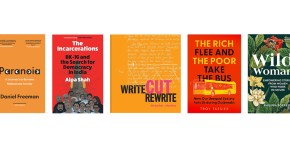
Wild women and restoring public trust: Books in brief
Andrew Robinson reviews five of the best science picks.
- Andrew Robinson
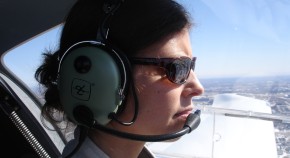
Cosmologist Claudia de Rham on falling for gravity
The aspiring astronaut turned theoretical physicist talks travelling, the accelerating expansion of the Universe, thinking beyond three dimensions and detecting gravitational waves.
- Davide Castelvecchi

The great rewiring: is social media really behind an epidemic of teenage mental illness?
The evidence is equivocal on whether screen time is to blame for rising levels of teen depression and anxiety — and rising hysteria could distract us from tackling the real causes.
- Candice L. Odgers
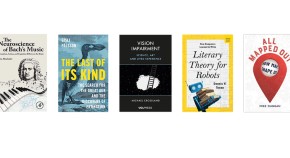
Verbose robots, and why some people love Bach: Books in Brief

Act now to prevent a ‘gold rush’ in outer space
As private firms aim for the Moon and beyond, a book calls for an urgent relook at the legal compact that governs space exploration.
- Timiebi Aganaba
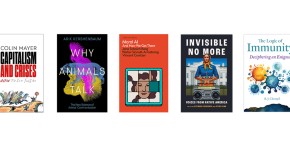
The enigmas of language and immunology, and other reads: Books in brief
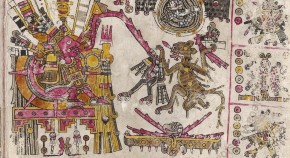
How our love of pets grew from a clash of world views
Indigenous Americans’ relationships with and knowledge of animals have influenced how Europeans have thought about animals since 1492.
- Surekha Davies

Greener cities: a necessity or a luxury?
Are urban trees and parks essential to improving the environment and human health — or just a sop to middle-class ideals of gentrification? Two books debate these opposing views.
- Timon McPhearson
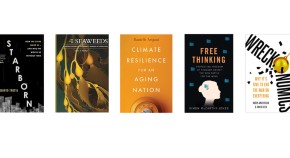
The mysteries of seaweeds and stars, and other reads: Books in brief

The ‘Bill Gates problem’: do billionaire philanthropists skew global health research?
Personal priorities are often trumping real needs and skewing where charitable funding goes.
- Andy Stirling
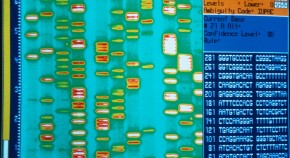
It’s time to admit that genes are not the blueprint for life
The view of biology often presented to the public is oversimplified and out of date. Scientists must set the record straight, argues a new book.
- Denis Noble

Science and government: can the power struggle ever end?
Similar goals but different strategies underlie tensions between science and the state, an in-depth analysis explains.
- Rhona Mijumbi
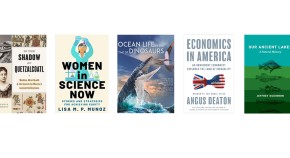
A forgotten Aztec scholar and more: Books in brief
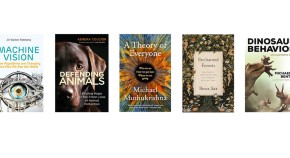
Gripped by dinosaurs, and a unified theory of behaviour: Books in Brief
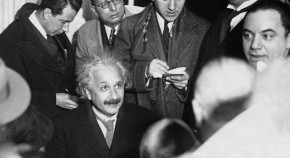
How Einstein built on the past to make his breakthroughs
The iconic physicist’s theories of relativity and atomic motions were not so revolutionary, a penetrating history argues.
- Helge Kragh

How we remember the dead by their digital afterlives
A broad-ranging analysis asks whether we can achieve a kind of immortality by documenting our lives and deaths online.
- Margaret Gibson
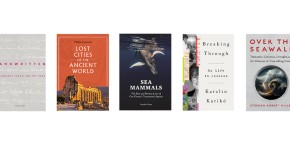
The handwriting of the greats, and solutions that make things worse: Books in brief

The research aiming to keep people healthier for longer
An exploration of the biological reasons that people age celebrates the role of worms and flies in enabling scientific discovery — and investigates how to age well.
- Linda Partridge

Black holes, love and poetry — an artistic exploration of intimacy and adventure
A book by physicist Kip Thorne and artist Lia Halloran explores the mysteries of space through poetry and paintings.
Quick links
- Explore articles by subject
- Guide to authors
- Editorial policies

Chicago Citation Guide (17th Edition): Book Reviews
- What Kind of Source Is This?
- Advertisements
- Books, eBooks & Pamphlets
- Book Reviews
- Class Handouts, Presentations, and Readings
- Encyclopedias & Dictionaries
- Government Documents
- Images, Artwork, and Maps
- Interviews and Emails (Personal Communications)
- Journal Articles
- Magazine Articles
- Newspaper Articles
- Primary Sources
- Religious Texts
- Social Media
- Videos & DVDs
- Works Quoted in Another Source
- No Author, No Date etc.
- Sample Paper, Bibliography, & Annotated Bibliography
- Powerpoint Presentations
On This Page
Book review - in a journal, book review - in a magazine, book review - on a website, books with editors in place of authors.
Some books have an editor or editors in place of an author. For editors, include the abbreviation ed. following the editor's name (or eds. for more than one editor). However, this abbreviation is not included in shortened footnotes.
Henry Findell, ed.
Findell, Henry, ed.
Eric Small and Will Rhodes, eds.
Small, Eric, and Will Rhodes, eds.
1. Reviewer's First Name Last Name, "Title of Review [if any]," review of Title of Book: Subtitle if Any, by Book Author/Editor's First Name Last Name, Name of Journal in which review appears Volume Number, no. Issue Number (Date of Publication): Page Number of Exact Citation, https://doi.org/DOI Number or Name of Database.
Bibliography Entry:
Reviewer's Last Name, First Name. "Title of Review [if any]." Review of Title of Book: Subtitle if Any, by Book Author/Editor's First Name Last Name. Name of Journal in which review appears Volume Number, no. Issue Number (Date of Publication): First Page Number of Article-Last Page Number of Article. https://doi.org/DOI Number or Name of Database.
This citation format is for book reviews found in a journal from a library database. For other types of journals (e.g. in print or from a website), begin the citation as shown above, up to and including the book author's name. Then complete the citation starting at Name of Journal using the appropriate citation format as shown on the Journal Articles section of the Chicago Citation Guide.
1. Reviewer's First Name Last Name, "Title of Review [if any]," review of Title of Book: Subtitle if Any, by Book Author/Editor's First Name Last Name, Name of Magazine, Date of Publication, Page Number of Exact Citation, https://doi.org/DOI Number or Name of Database.
Reviewer's Last Name, First Name. "Title of Review [if any]." Review of Title of Book: Subtitle if Any, by Book Author/Editor's First Name Last Name. Name of Magazine, Date of Publication. https://doi.org/DOI Number or Name of Database.
This citation format is for book reviews found in a magazine from a library database. For other types of magazines (e.g. in print or from a website), begin the citation as shown above, up to and including the book author's name. Then complete the citation starting at Name of Magazine using the appropriate citation format as shown on the Magazine Articles section of the Chicago Citation Guide.
1. Reviewer's First Name Last Name, "Title of Review [if any]," review of Title of Book: Subtitle if Any, by Book Author/Editor's First Name Last Name, Title of Website, Name of Owner or Sponsor of the Website [if different from Title of Website], Date of copyright or modification or access, URL.
Reviewer's Last Name, First Name. "Title of Review [if any]." Review of Title of Book: Subtitle if Any, by Book Author/Editor's First Name Last Name. Title of Website. Name of Owner or Sponsor of the Website [if different from Title of Website]. Date of copyright or modification or access. URL.
- << Previous: Books, eBooks & Pamphlets
- Next: Class Handouts, Presentations, and Readings >>
- Last Updated: Oct 19, 2023 9:58 AM
- URL: https://columbiacollege-ca.libguides.com/chicago
Ask Yale Library
My Library Accounts
Find, Request, and Use
Help and Research Support
Visit and Study
Explore Collections
Finding Book Reviews in the Sciences: Journals to Browse for Book Reviews
- Finding Book Reviews in Articles+
- Journals to Browse for Book Reviews
- Web Sites for Book Reviews
- Book Review Index 1965-2008
- The New York Review of Books 1963-
- Choice Reviews
Journal List
- General Purpose
- Life Sciences
- Physical & Applied Sciences
- Earth Sciences
- Mathematics
American Scientist
Library Journal
New Scientist
New York Review of Books
Reference & User Services Quarterly
Science News
Scientific American (October: Recommended Books)
American Biology Teacher
American Entomologist
BioScience (not every issue)
Bulletin - Entomological Society of Canada
Canadian Field-Naturalist
Condor: Bulletin of the Cooper Ornithological Club
Economic Botany
Electronic Green Journal
Journal of Mammalogy
Kew Bulletin
Marine Mammal Science
Plant Science Bulletin
Quarterly Review of Biology
T.L.S. (Times Literary Supplement)
The best way to locate book reviews in physics journals is to use a database like the Web of Science, located at webofknowledge.com . From the main screen, click on the Advanced Search tab.
Your main search will follow the example, such as TS=(quantum mechanics). Restrict the results to the Book Review type.

It is likely that you will not go directly to the search results. The Web of Science will show you a Search History preview. Click on the number of results for your latest search to see them.

This search yielded 378 results. You can click on the Yale Links button to find a copy of the review at Yale or click on an item title to read more about it.
Here are some of the journals represented in the results:
- Philosophy of Science
- British Journal for the Philosophy of Science
- Contemporary Physics
- Studies in History and Philosophy of Modern Physics
- Physics Today
- American Journal of Physics
- Current Science
- Nuclear Physics
Of course, if you search for something else — like cosmology (or cosmolog* , which will catch more forms of the word), string theory, telescopes, colliders, and other topics (either using the topic search or the all fields search), the journals that come up may be a bit different. The important thing to do is to explore your options!
Some publications may not be indexed in the Web of Science. Here are a few more resources to explore:
- Physics Education
- Physics World Magazine
There are two major ways to find book reviews you need in Earth sciences journals. (If you're looking for introductory content or don't know if the review for a specific book title will be in a scholarly journal or not, please see the tabs on finding book reviews in Articles+ and Choice Reviews.) The first is to use the GeoScienceWorld platform, and the second is to use the Web of Science.
Outside of databases, a good, general-purpose place to explore book reviews is the AGU portal on the Wiley Online Library. You can search for the book title or a topic with the words book review included in the search.
GeoScienceWorld
Go to the GeoScienceWorld.org main page . From there, use either the basic search or the advanced search to query the topic you need. From here, there are two basic things you need to do to find all book reviews on your topic.
When you search, first add book review . Some items ingested into GeoScienceWorld have not been tagged as book reviews even though they are; this is because GeoScienceWorld is aggregating information from many sources. If you search for Cambrian book review , you will see results like this:

Second, you can just do a basic search for something like Cambrian Explosion and select Article Type — Book Review on the lefthand side. That will catch most of the remaining reviews.

Web of Science
The Web of Science Advanced Search will help you find book reviews in the scholarly literature. If we do a search for the word Cambrian in the advanced search like so:

and we see 28 results for this search, most of them in the geosciences.
Here are some of the journals represented:
- Geographical Journal
- American Historical Review
- Annals of Science
- Geological Magazine
The journals you find will vary depending on the topic you are searching for.
MathSciNet, the premier literature database in mathematics, makes it possible to look at book reviews in the search. The following search is for fractal* (where the * serves as a wild card to include other forms of the word).
Use the drop-down menu to select where you want your search term to appear — such as "anywhere" — and choose the publication type "Books" from the radio menu just below.

Once on the results list, use the left-hand filters to narrow down to "Reviewed." The reviews you see will be a mix of peer reviews from MathSciNet and publishers' descriptions (from a publication's table of contents).

For popular works, we recommend looking at the tabs Finding Book Reviews in Articles+ and Web Sites for Book Reviews. If you would like more assistance locating books in mathematics, please contact our mathematics librarian, Andy Shimp ([email protected]), who contributed content for this page.
- << Previous: Finding Book Reviews in Articles+
- Next: Web Sites for Book Reviews >>
- Last Updated: Dec 18, 2023 10:20 AM
- URL: https://guides.library.yale.edu/sciencebookreviews
Site Navigation
P.O. BOX 208240 New Haven, CT 06250-8240 (203) 432-1775
Yale's Libraries
Bass Library
Beinecke Rare Book and Manuscript Library
Classics Library
Cushing/Whitney Medical Library
Divinity Library
East Asia Library
Gilmore Music Library
Haas Family Arts Library
Lewis Walpole Library
Lillian Goldman Law Library
Marx Science and Social Science Library
Sterling Memorial Library
Yale Center for British Art
SUBSCRIBE TO OUR NEWSLETTER
@YALELIBRARY

Yale Library Instagram
Accessibility Diversity, Equity, and Inclusion Giving Privacy and Data Use Contact Our Web Team
© 2022 Yale University Library • All Rights Reserved

- CURRENT ISSUE
- PUBLICATIONS
The Journal
The Book Review, India’s first review journal in English, was started in 1976 by Chitra Narayanan, Uma Iyengar and Chandra Chari . It provides critical, in-depth reviews of books published in India and abroad on a variety of subjects — social sciences, humanities, fiction, management, environment, art, culture, science and children’s literature thus rendering a signal service to book lovers and scholars all over the country, including the small mofussil towns where access to the latest publications is difficult.
Chandra Chari
89 NMC Shankar Chowk Gurgaon Haryana-122002 Email: [email protected]
Uma Iyengar
23,Good Earth ,Palm Grove, Dodda Aldaman Road, Kumbhalgodu, Kengeri ,Bangalore-560074, Karnataka Email: [email protected]
Consultant Editor
- Adnan Farooqui
Advisory Board Founder Members
- K.R. Narayanan
- Nikhil Chakravartty
- Meenakshi Mukherjee
- Raja Ramanna
Editorial Advisory Board
- Romila Thapar
- Mallika Joseph
- Narayani Gupta
- Chitra Narayanan
- Girish Karnad
- T.C.A. Srinivasa Raghavan
About The Journal
The website provides complete instructions to authors/reviewers. The reviewers are requested to review the books with objectivity and an open mind, without any bias or prejudice. The reviews are required to be jargon free and easily accessible to students and scholars. The journal has a well-defined peer-review and publication policy. The journal has had an eminent editorial advisory board since its inception in 1976 and the members of the board have a policy of rigorous peer review of all submissions to ensure high standards of excellence in content and style.
The journal has a well-defined Ethics policy. The Book Review is a non-political, ideologically non-partisan journal which tries to reflect all shades of intellectual opinions and ideas. The views of the reviewer sand authors writing for the journal are their own. All reviews and articles published in The Book Review are exclusive to the journal and may not be reprinted without the prior permission of the editors.
The journal has a declared frequency of publication each year. The journal is published regularly and in time following its declared frequency It has been a monthly for the last 28 years. It has a postal concession from the Department of Posts and copies are posted regularly on the 10 th /11 th of each month.
The journal is indexed in a given database, the Archives of The Book Review which is updated every month.
__________________________________________________________________________________________
The journal levies no submission/publication charges.Review copies of books are sent to reviewers by the journal.Paid advertisements from publishers are carried in the print and the web edition.
No review may be posted on any website without prior permission. If a review or part thereof is found published on a website or on the social media, the editorial board will withdraw the review and not publish it in The Book Review.
Any judicial dispute, in case there is one, with The Book Review Literary Trust, can only be settled in a Delhi court.
The Book Review (TBR) was set up as a non-partisan, non-ideological forum to:
- Promote Indian publications and Indian authors, particularly those in the Indian languages
- Develop a culture of critical in-depth reviews, leveraging the expertise of the best in a given field
- Promote awareness of studies in special areas of concern such as South Asian issues and gender issues
- Encourage and develop high-quality translations of works in the Indian languages
- To attract a wider audience for the areas, subjects and issues of the journal’s focus
Since its inception, TBR has attained many of its objectives, quickly becoming the benchmark, across the world, for critical reviews of works published in South Asia. The focus on Indian languages, South Asian studies, gender issues and children’s books, has remained unwavering, with numerous special issues, seminars and publications. Globally, the leading experts in fields as diverse as international relations, Gandhian studies, and ancient Indian history regularly contribute to the journal. Covering a very broad array of subjects, this pioneering venture has rendered a unique service to the literary and academic community and the reading public. The main goal of TBR is now to reach out to a wider audience.
The Book Review, India’s first review journal in English, was started in 1976 by Chitra Narayanan, Uma Iyengar and Chandra Chari. From the beginning, an Advisory Board was set up with founding members K.R. Narayanan ,V.P. Dutt, Dr S. Gopal, Meenakshi Mukherjee and Dr. Raja Ramanna and Romilla Thapar.
In 1980, the journal was temporarily handed over to Nikhil Chakravartty of Perspective Publications as all three founding editors were no longer in Delhi. The Book Review Literary Trust was founded in 1989 to significantly expand the activities of the organization to seminars, translations, publications and lectures. The three founding editors also became the Trustees and took back control of the journal.
In 1990, the journal started being published in its unique tabloid format, with a characteristic contents page and page layout that was widely emulated by other magazines in the same space. TBR’s periodicity became monthly in 1993. Since then, TBR has gone on to widen the range and increase the frequency of its special issues, including issues on South Asia, the Indian languages, gender issues, environment, education and Children’s Literature. 1998 saw the introduction of Book Fair Specials. From 1999 every November issue became Children’s book Special. South Asia bumper specials was started in the year 2000.
- All content
- Rural Alaska
- Crime & Courts
- Alaska Legislature
- ADN Politics Podcast
- National Opinions
- Letters to the Editor
- Nation/World
- Film and TV
- Outdoors/Adventure
- High School Sports
- UAA Athletics
- Food and Drink
- Visual Stories
- Alaska Journal of Commerce (Opens in new window)
- The Arctic Sounder
- The Bristol Bay Times
- Legal Notices (Opens in new window)
- Peak 2 Peak Events (Opens in new window)
- Educator of the Year (Opens in new window)
- Celebrating Nurses (Opens in new window)
- Top 40 Under 40 (Opens in new window)
- Alaska Spelling Bee (Opens in new window)
- Alaska Craft Brew Festival
- Best of Alaska
- Spring Career Fair (Opens in new window)
- Achievement in Business
- Youth Summit Awards
- Puffin Charter Giveaway
- White Raven Photo Contest - Voting
- Teacher of the Month
- 2024 Alaska Summer Camps Guide (Opens in new window)
- 2024 Graduation (Opens in new window)
- Alaska Visitors Guide 2023 (Opens in new window)
- 2023 Best of Alaska (Opens in new window)
- Alaska Health Care (Opens in new window)
- Merry Merchant Munch (Opens in new window)
- On the Move AK (Opens in new window)
- Senior Living in Alaska (Opens in new window)
- Youth Summit Awards (Opens in new window)
- Alaska Visitors Guide
- ADN Store (Opens in new window)
- Classifieds (Opens in new window)
- Jobs (Opens in new window)
- Place an Ad (Opens in new window)
- Customer Service
- Sponsored Content
- Real Estate/Open Houses (Opens in new window)
Book review: A revival of culture and traditional arts in Southeast is illustrated in ‘Tsimshian Eagle’
One of David A. Boxley's poles stands on the grounds of the University of Washington Medical Center-Northwest in memory of his longtime friend and sister-in-law Cindy James. Dance groups arrived from Alaska and British Columbia to perform at the pole's installation. This group, Cape Fox Dancers, of Ketchikan, is seen dancing in front of James' pole. (Photo by Steve Quinn, courtesy of Chin Music Press)
Tsimshian Eagle: A Culture Bearer’s Journey
David Boxley with Steve Quinn; Chin Music Press, 2023; 256 pages; $39.95.
“There’s been an amazing rebirth of totem poles for all the Southeast Alaska tribes: Tlingit, Haida, and Tsimshian,” longtime carver David Boxley writes. “They are a living art form that is of central importance to Native culture on the Northwest coast.”
Boxley has been central to that revival, especially among the Tsimshian people of his home village of Metlakatla. For over 40 years he’s been carving totem poles, helping to lead a cultural revival that has restored a nearly lost tradition. In “Tsimshian Eagle,” his recent book combining memoir with fine art photography, he tells how this happened.
Today, Boxley is internationally known and his totem poles and other exquisite artworks are seen in museums, galleries and personal collections around the world, as well as in public places from Seattle to Juneau and beyond. What many who appreciate his work might not know is that he is largely self-taught. When he carved his first pole, there was no one to teach him.
Boxley grew up in Metlakatla, located on Annette Island near the southernmost reach of the Alaska Panhandle. His mother suffered from trauma and alcoholism, so he was raised by his grandparents. In the early pages he gives an account of his childhood in the remote village in the 1960s, a time when many traditional practices of the Tsimshian had long been suppressed by missionaries and the government.
A good student, Boxley’s initial goal was to be a teacher and a basketball coach, and for a while, he succeeded. After attending college in Washington, he returned to Metlakatla and taught and coached for several years.
Boxley had strong relationships with both of his grandparents, something he references repeatedly throughout this book. It was his grandmother’s passing in 1982 that launched what became his career. Wishing to honor her memory, he carved a totem pole and organized Metlakatla’s first potlatch in decades. Little knowledge of either practice remained, and Boxley had to figure them out on his own. He did so, igniting a cultural revival in the process.
Tsimshian carver David Boxley in his regalia. (Photo by Steve Quinn)
To understand Boxley’s story, one needs to understand the origins of Metlakatla, which differ tremendously from other Alaska Native villages — a history Boxley nicely summarizes in an early chapter. The Tsimshian people have long lived along the coast of what is now the northern British Columbia coast. In 1887, intertribal conflicts resulted in a splinter group breaking off and, under the guidance of British missionary William Duncan, relocating to Annette Island in what was then the District of Alaska.
In keeping with policies supported by the church and government, residents of the town abandoned many traditional practices viewed as antithetical to Christian and Western values. This includes the creation of totem poles, which white observers considered pagan idols, although Boxley stresses that they were used for telling stories, and were never worshiped.
Boxley briefly discusses the complicated history of missionaries and Alaska Natives, noting that Duncan wasn’t without his shortcomings. But he was committed to the Tsimshian and lived in the village for the remainder of his life. Metlakatla, a community with its own distinct history and culture, wouldn’t exist without him.
Tsimshian carver and culture bearer David Boxley in his workshop. (Photo by Steve Quinn, courtesy of Chin Music Press)
After Boxley carved his first pole and held that first potlatch, his direction in life was set. He soon left teaching, and in 1986 moved to Seattle to pursue his art in a place where professional opportunities were more abundant than in Southeast Alaska. But his heart remained in Metlakatla, and his work was exclusively focused on recovering and revitalizing traditions that had been forgotten. Those traditions now permeate the Southeast, but they were almost absent when he commenced on his artistic journey. In the 1960s, Haida and Tlingit carvers had again begun constructing totem poles, but at the time Boxley carved his first, Alaska’s Tsimshian residents had yet to follow suit.
Boxley recalls that first potlatch for his grandmother, and several other early ones that followed, including one for his grandfather. Over time he became a master of totem carver, and despite living in Washington state, has remained actively involved in Metlakatla, incorporating his art into community and cultural events including potlatches and other traditional practices that Boxley was pivotal in rescuing from near extinction.
At several points, Boxley pauses to remind readers that there weren’t mentors in Metlakatla when he first brought a cedar pole into his shop, picked up an adze he had made with his grandfather, and began carving. “I had to reach back generations to create what is normal now,” he writes. Today, traditional arts are thriving in the village, and he says the “number of active artists has grown tenfold during my lifetime.”
[ Totem pole raised at Alaska Native Heritage Center symbolizes healing from boarding school trauma ]
The results of his lifetime of work are heavily featured in the second half of this book, in which the text takes a backseat to fine art photography. Pictures of Boxley at work in his shop are interspersed with closeup portraits of his totem poles, paddles, drawings for screen prints, paintings on drums that one of his sons builds, bentwood boxes and more. Dozens of these images are followed by portraits taken at celebrations, and at events where Git Hoan, the dance group Boxley leads, have performed. The beauty and colors spilling from these latter pages put Boxley’s work into context.
“What I really enjoy is carving pieces to be used in performances,” he writes. “That’s because the pieces are being used in a traditional way, not just hanging on walls.”
One of Tsimshian carver David Boxley’s totem poles. (Photo by David Boxley, courtesy of Chin Music Press)
Boxley’s two sons have followed him into traditional arts, he’s taught countless students, and he’s spurred a revival far beyond what he could have envisioned in 1982, when simply carving a pole and holding a potlatch were his immediate goals. He’s been central to the restoration of Tsimshian heritage, and “Tsimshian Eagle” tells that story.
“I want to make sure that what we have doesn’t go away — again,” he writes late in the book. “I’m trying to instill pride in our culture, our knowledge, our language. I struggle with it sometimes, but I accept the challenge with a purpose.”
[ With the Luk’ae Tse’Taas Comics collective, Alaska visual artists help build a broader universe ]
[ Iñupiaq author wins national honors for debut novel celebrating unity and beauty in Indigenous cultures ]
[ Book review: Landscapes of family and place flourish in this Alaska memoir ]
David James
David A. James is a Fairbanks-based freelance writer, and editor of the Alaska literary collection “Writing on the Edge.” He can be reached at [email protected].

Eurasia Review
A Journal of Analysis and News
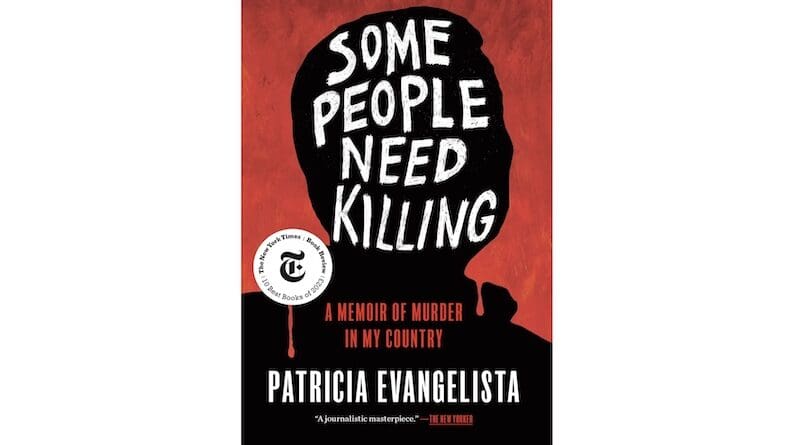
"Some People Need Killing: A Memoir of Murder in My Country," by Patricia Evangelista
A Memoir Of Murder In The Philippines – Book Review
By Walden Bello
Patricia Evangelista’s Some People Need Killing: A Memoir of Murder in My Country is not an easy read. An account of genocide is never an easy read. Now, some may quibble that former Philippine President Rodrigo Duterte’s taking the lives of only (!) 27,000 people does not qualify as genocide. But Duterte himself knew it was genocide he was unleashing on his country when, in the third month of his war on drugs, he made his celebrated remark: “Hitler massacred three million Jews… Now, there are three million drug addicts…I’d be happy to slaughter them.”
Because it is an account of genocide, I would be surprised if Patricia Evangelista’s Some People Need Killing were to become a bestseller in my country. For many Filipinos now want to forget the Duterte years, treating them as a nightmare from which they have fortunately awakened. And, indeed, for a very large number, among them avid readers of bestsellers, the book will be an unwelcome reminder that they had a hand in bringing the man to power.
Executioners and Victims
That many of Evangelista’s compatriots will consider the book a repository of memories that are best left in slumber is unfortunate since they will not encounter the unforgettable characters that she profiles in painstaking detail. There is, of course, Duterte, who does not hesitate to tell his audiences, “There will be blood,” or something to that effect, that invariably triggers their enthusiastic applause. There is Evangelista’s main contact in the police force, a Colonel Domingo, who revels in her portrayal of him as an all-knowing malignant presence in an article even as he distances himself from the actual snuffing of lives. There is Simon, a vigilante to whom the killing of suspected drug dealers and users is subcontracted by the police, who tells Evangelista, “I’m really not a bad guy…I’m not all bad. Some people need killing.”
But for this reviewer, the most distressing—and poignant—case is that of Normy Lopez, the mother of Djastin, an epileptic brutally gunned down by the police in one of those executions they tried to pass off as a result of “resistance” on the part of the victim. Normy, however, was not one to take the murder of her son sitting down. She sought justice through the Commission on Human Rights, through the courts, and she succeeded in getting the murderer identified and charged.
Then, her determination to get justice for her son faltered, and the reason was not a threat from the police but poverty. She decided to withdraw the case against Djastin’s killer because the lure of a monetary settlement was too great and her family’s economic circumstances were too wretched. “I regret it,” she tells the author. “Until now, I regret it. I regret it every time I see Djastin’s picture. I’d stop it if I could. If we never signed, I’d take it back. If we never got the money, if it hadn’t been spent, I’d give it all back.”
Why They Went for Duterte
How could people be taken in by Duterte? The author offers not a formal sociological analysis but has Duterte’s supporters speak for themselves. Jason Quizon, who considered himself a liberal, said it was because Duterte was a “man of action” who would get rid of corruption and whose tough words about killing criminals were meant mainly to impress “simple-minded people.” Dondon Chan, a law-abiding man, said it was because Duterte would get rid people who were a “drain on the country’s resources.“ Joy Tan, because the preceding administration had been incompetent. Ann Valdez, because she finally found in Duterte the father figure she had been in search of.
But were these people taken in?
In my view—and most likely Evangelista’s, too—Duterte’s appeal lay in people seeing in him what they wanted to see: a law-and-order guy, someone who would get rid of corruption and officials on the take, someone who would take on the rich and powerful. Indeed, for some on the left—and there were not an insignificant number—“Digong” was the medium of the social revolution that had eluded them.
So, were all these good people taken in? Or did they delude themselves?
The Duterte Puzzle
I would like to add my two cents worth in solving the puzzle that was Duterte. Evangelista does not explicitly acknowledge this, but her narrative implies that the guy had charisma. Not the inspirational type, like that of his authoritarian buddy, Narendra Modi of India. Rather, it was gangster charm, that powerful mix that both attracts and repels, similar to that conveyed by Robert De Niro in his best mafioso chieftain roles.
This perverse charm was connected to Duterte’s discourse—a mixture of boasts, outrageous revelations, and curses that people did not hear from run-of-the-mill politicos, and therefore, was captivating, indeed, for some, hypnotic. Regarding Duterte’s discourse, let me put on my professional sociologist’s hat and make three observations.
First, from a progressive and liberal point of view, his discourse was politically incorrect. But that was its very strength; it came across as liberating to its middle-class and lower-class audience. Duterte was seen as telling it as it was, as deliberately mocking the dominant discourse of human rights, democratic rights, and social justice that had been ritually invoked during the annual celebrations marking the so-called “EDSA Revolution” that had overthrown the dictator Marcos but was increasingly regarded as a cynical coverup for the very real lack of human rights, democracy, and genuine equality in post-EDSA Philippines and its pervasive corruption.
Second, Duterte’s discourse involved a clever application of what the French sociologist Pierre Bourdieu calls the strategy of condescension. His coarse declarations, delivered conversationally and with frequent shifts from Tagalog to Bisaya to English, made people identify with him, eliciting laughter with his portrayal of himself as someone who bumbled along like the rest of the crowd or had the same illicit desires, at the same time that it also reminded the audience that he was someone different from and above them, as someone with power. This was especially evident when he paused and uttered his signature, “ Papatayin kita ,” or “I will kill you,” as in “If you destroy the youth of my country by giving them drugs, I will kill you.”
Third, Duterte’s speechmaking did not follow a conceptual or rhetorical logic, and this was another reason he could connect with the masses. The formal conceptual message written by speechwriters was deliberately overridden by a series of long digressions where he told tales in which he was invariably at the center of things that he knew would hold the audience’s attention, even when they had heard it several times before.
Let me confess here that when I listened to Duterte’s digressions, peppered as they were with outrageous comments, like telling an audience he would pardon policemen convicted of extra-judicial executions so they could go after the people who brought them to court, my mind had to restrain my body from joining the chorus of laughter at the sheer comic effrontery of his words. The impact was not unlike that felt by Evangelista while she was at a massive rally listening to Duterte’s final speech before the 2016 presidential elections, an explosive rant pockmarked by a thousand and one digressions that would be his signature style over the next six years: “You elitists, I write. Us versus them, I write. Kill you, I write. The lights burn hot. The woman behind me screams the mayor’s name, and in spite of my Latin honors, I feel a compulsion to cheer too.”
Recantations
The author informs us later in her narrative that Duterte supporters Jason Quizon, Dondon Chan, Joy Tan, and Ann Valdez ended up expressing their regret at having voted a mass murderer to office. But how representative are they of the millions who cast their ballots for him? I doubt if many others recanted. Faced with the unpleasant consequences of their deeds, the likely reaction of most people is to dig in their heels or simply shrug off their responsibility like water off a duck’s back.
Like any good book, Some People Need Killing poses more questions than answers, and perhaps the biggest ones are: Why did the people of what is often referred to as Asia’s oldest democracy allow a mass murderer to get away with murder for six years? Why, despite his record of genocide, did they give him a 75 percent approval rating when he left office? As in Hitler’s coming to power on the heels of an electoral victory in 1933, was not democracy an accomplice in Duterte’s ascent to the presidency in 2016?
As I said at the beginning of this review, Some People Need Killing will probably not be a bestseller in my country (though I desperately wish to be proven wrong). But it will be a testament to the harsh reality that once upon a time, blood flowed profusely in the streets and alleyways of our cities while many Filipinos applauded, that, unless we learn and act on the hard truth that our society needs fundamental reforms to bring about a better dispensation than the rotten one we now have, there can be no guarantee that a murderous fascist like Rodrigo Duterte will not again emerge from the sewers, from the depths of people’s despair.
Patricia Evangelista describes herself in the book as a “trauma journalist.” The term is apt, but equally fitting is the description “tenacious journalist”—one who sought without let-up the killers in uniform to extract the truth that was hidden in their minds and the evil that was lurking in their hearts. If ever Duterte is extradited to the Hague to stand trial, her book will undoubtedly serve as one of the decisive pieces of evidence that will merit him the multiple life sentences he will have to serve at the detention center of the International Criminal Court in the prison complex of Scheveningen on the outskirts of the Hague…If.
This article was published at FPIF
- ← ‘Laissez-Faire’ Sweden Had Lowest Mortality In Europe From 2020–2022 – OpEd
- Gagauzia Plans To Declare Independence If Moldova Pursues Unity With Romania – Analysis →

Walden Bello
FPIF commentator Walden Bello is Co-Chair of the Board of Focus on the Global South and Adjunct Professor of Sociology at the State University of New York at Binghamton. He is a prominent voice pushing for the demilitarization and denuclearization of the South China Sea.
Leave a Reply Cancel reply
Your email address will not be published. Required fields are marked *
Journal of Materials Chemistry A
Green solvents in battery recycle: status and challenges.
With the increasing global demand for energy and continuous destruction of the environment, the demand for sustainable green development is becoming increasingly urgent. However, the development and renewal of new-energy vehicles and various electronic devices have re- sulted in an increasing number of waste batteries. The key to the sustainable development of today’s battery industry is the efficient and green recycling of valuable waste batteries, especially metal resources. Recycling batteries cannot only halt the environmental pollution caused by batteries but also transform waste into resources for reuse. Current mainstream recycling methods, such as traditional wet metallurgy and pyrometallurgy, can cause sub- stantial environmental pollution. We systematically reviewed the recent research progress on the use of green solvents to recycle battery metal materials and summarized the char- acteristics and efficiency of each recycling process in detail to provide an effective reference for the future development of green solvents in the battery recycling industry. Finally, the prospects for developing battery technology and green solvent systems for recycling battery metal materials are discussed, and current considerations in the field of battery recycling and possibilities for each green solvent hybrid system are proposed.
- This article is part of the themed collection: Journal of Materials Chemistry A Recent Review Articles
Article information
Download citation, permissions.
W. Qiao, R. Zhang, Y. Wen, X. Wang, Z. Wang, G. Tang, M. Liu, H. Kang, Z. Said, J. Hwang and C. Liu, J. Mater. Chem. A , 2024, Accepted Manuscript , DOI: 10.1039/D3TA07905H
To request permission to reproduce material from this article, please go to the Copyright Clearance Center request page .
If you are an author contributing to an RSC publication, you do not need to request permission provided correct acknowledgement is given.
If you are the author of this article, you do not need to request permission to reproduce figures and diagrams provided correct acknowledgement is given. If you want to reproduce the whole article in a third-party publication (excluding your thesis/dissertation for which permission is not required) please go to the Copyright Clearance Center request page .
Read more about how to correctly acknowledge RSC content .
Social activity
Search articles by author.
This article has not yet been cited.
Advertisements

- Create new account
- Reset your password
- Translation
- Alternative Standpoint
- HT Parekh Finance Column
- Law and Society
- Strategic Affairs
- Perspectives
- Special Articles
- The Economic Weekly (1949–1965)
- Economic and Political Weekly
- Open Access
- Notes for contributors
- Style Sheet
- Track Your Submission
- Debate Kits
- Discussion Maps
- Interventions
- Research Radio
Advanced Search
A + | A | A -
Lives of Women in Cross-regional and Regional Marriages in Rural Uttar Pradesh
Moving for Marriage: Inequalities, Intimacy and Women’s Lives in Rural North India by Shruti Chaudhry , New York: SUNY Press, 2021; pp 313, price not available (hardbound).
The institution of marriage has drawn attention across social science disciplines, to understand the nature of society, relations among people, the relevance of caste and other areas of significance to human society. Often, the literature on marriage revolves around rituals, rites, patriarchy and rural–urban differences. Shruti Chaudhry has brought forth a detailed account of the institution, from the perspective of women and their lives as a bride. The author has segregated brides based on region into regional (places nearby) and cross- regional (places far away and in different states) marriages. Much work has been done on the migration of women for marriage but they have mostly explained the phenomenon in a negative light.

Dear Reader,
To continue reading, become a subscriber.
Explore our attractive subscription offers.
To gain instant access to this article (download).
(Readers in India)
(Readers outside India)
Your Support will ensure EPW’s financial viability and sustainability.
The EPW produces independent and public-spirited scholarship and analyses of contemporary affairs every week. EPW is one of the few publications that keep alive the spirit of intellectual inquiry in the Indian media.
Often described as a publication with a “social conscience,” EPW has never shied away from taking strong editorial positions. Our publication is free from political pressure, or commercial interests. Our editorial independence is our pride.
We rely on your support to continue the endeavour of highlighting the challenges faced by the disadvantaged, writings from the margins, and scholarship on the most pertinent issues that concern contemporary Indian society.
Every contribution is valuable for our future.
- About Engage
- For Contributors
- About Open Access
- Opportunities
Term & Policy
- Terms and Conditions
- Privacy Policy
Circulation
- Refund and Cancellation
- User Registration
- Delivery Policy
Advertisement
- Why Advertise in EPW?
- Advertisement Tariffs
Connect with us
320-322, A to Z Industrial Estate, Ganpatrao Kadam Marg, Lower Parel, Mumbai, India 400 013
Phone: +91-22-40638282 | Email: Editorial - [email protected] | Subscription - [email protected] | Advertisement - [email protected]
Designed, developed and maintained by Yodasoft Technologies Pvt. Ltd.

IMAGES
COMMENTS
Book reviews appear in journals for language teachers, alongside research-based articles and state-of-the art reviews. ... In fact, different journals may have different expectations, so it is useful to look at examples of book reviews published in the journal you are considering submitting to. Appendix 1 shows an example of a review published ...
An academic book review provides the main ideas, and since published book reviews typically have a limited word count, the summary should remain brief. Analysis and Significance. Compare the book and its argument with the other literature on the topic. Discuss its contribution to past and current research and literature.
University of Wisconsin, Madison; Scarnecchia, David L. "Writing Book Reviews for the Journal Of Range Management and Rangelands." Rangeland Ecology and Management 57 (2004): 418-421; Simon, Linda. "The Pleasures of Book Reviewing." Journal of Scholarly Publishing 27 (1996): 240-241; Writing a Book Review. The Writing Lab and The OWL.
Look to see which books journal publishers are seeking reviews for. Find a book that interests you and pitch it to publishers. The first approach works by finding a journal in your field that is soliciting reviews. This information may be available on the journal's website (e.g., on a page titled "Books for Review").
ISBN: 9780814758366. Instead of italics, please underline book titles, and other text you wish to appear italicized in your review. Please adhere to the assigned length limits for your review: 600-800 words for a single book review and 1000-1200 for a two-book review essay. The word limits for essays comprising more than two books will be ...
Rejoinders are reviews where the reviewer and author are given the opportunity to discuss the book and its review in the same journal issue, increasing the objectivity of the reviewer and providing the reader with a more balanced perspective of the book being evaluated. 16, 52 The multidisciplinary format requires a book be reviewed by multiple ...
The writing style in a book review varies little from journal to journal. Although a chapter-by-chapter summary is not required, the genre of a book review does require the writer to say what the book is about. This needs to be done in moderation 254 RELC Journal 53(1)
WRITING AN BOOK REVIEW FOR AN ACADEMIC JOURNAL Step 1: Read the book in it's entirety Don't just read the chapters of the book, but also look at the following: foreword, preface, acknowledgements, references, index etc. As you read, take notes in your own words Note the following:
Once you have selected a journal, you can send a pre-submission inquiry to the editor, mentioning which book you have reviewed and why you think the book review would be of interest to the journal's audience. However, don't send your article to the journal at this stage. If the journal editor shows interest in your book review, you can submit ...
Writers of book reviews typically progress through four stages, as follows: 1. Introduce the book: Outline the general topic Indicate who the book is for. Place the book in its field. 2. Outline the content of the book: Give a general view of its the organisation. State the topic of each chapter/section.
review should be educational, attractive and opinionated. 11. Ideally, a book review should be written by an expert but anyone. else who has some basic core knowledge of the subject, which. the ...
Book reviews play important roles in scholarly communication especially in arts and humanities disciplines. By using Web of Science's Science Citation Index Expanded, Social Sciences Citation Index, and Arts & Humanities Citation Index, this study probed the patterns and dynamics of book reviews within these three indexes empirically during the past decade (2006-2015). We found that the ...
Note: This information is geared toward researchers in the arts and humanities. For a detailed guide on writing book reviews in the social sciences, please check the USC Libraries guide to Writing and Organizing Research in the Social Sciences, authored by Dr. Robert Labaree.. When writing an academic book review, start with a bibliographic citation of the book you are reviewing [e.g., author ...
Robert Hudson. Book reviews are a good way to get started with writing for a journal and this Learning and CPD activity takes you through the process of understanding the aims of book review, undertaking practice pieces through to reviewing a book and advice on the dos and don'ts of book reviewing.
If you are ready to take the plunge, here is a step-by-step guide to navigating this process: 1. Identify a journal in your area of study that publishes book reviews. 2. Reach out to the reviews editor. 3. Look at other reviews while you are waiting for your book. 4. Read the book and write the review.
Act now to prevent a 'gold rush' in outer space. As private firms aim for the Moon and beyond, a book calls for an urgent relook at the legal compact that governs space exploration. Timiebi ...
Book Review Editor. American Journal of Sociology. 1155 E. 60th St. Chicago, IL 60637. Packages are likely to reach the journal most efficiently if they are addressed to the editor rather than to a particular individual. AJS aspires to review books within two years of the date of publication. Requests for review should be made as close to the ...
Then complete the citation starting at Name of Magazine using the appropriate citation format as shown on the Magazine Articles section of the Chicago Citation Guide. 1. Annabel Gutterman, review of My Broken Language, by Quiara Alegría Hudes, Time Magazine, April 12, 2021, 99, MAS Ultra - School Edition. 2.
There are two major ways to find book reviews you need in Earth sciences journals. (If you're looking for introductory content or don't know if the review for a specific book title will be in a scholarly journal or not, please see the tabs on finding book reviews in Articles+ and Choice Reviews.)The first is to use the GeoScienceWorld platform, and the second is to use the Web of Science.
A fair, authoritative review of scholarly work is an important goal of the journal. For this reason, most book/media reviews are invited by the English Today Book Review Editor. The journal selects a small number of newly published works for review based on the importance and relevance of the topics and typically publishes 2-3 reviews in each ...
Book reviews are published online, with a list of books reviewed and review authors appearing in the Table of Contents, along with a link to the reviews, of the printed issue. Below is an example of how book reviews published in The Journal of Politics in this online format should be cited: Mitchell Brown (2011).
The Book Review, India's first review journal in English, was started in 1976 by Chitra Narayanan, Uma Iyengar and Chandra Chari . It provides critical, in-depth reviews of books published in India and abroad on a variety of subjects — social sciences, humanities, fiction, management, environment, art, culture, science and children's literature thus rendering a signal service to book ...
A new perspective on the writing of the Bible, James Bond's creator, how animals have fun and more. Fleming was "the son of wealth, but the grandson of poverty," as Mr. Shakespeare tells it ...
[Book review: Landscapes of family and place flourish in this Alaska memoir] David James David A. James is a Fairbanks-based freelance writer, and editor of the Alaska literary collection ...
The Best Books of February 'Mirrors of Greatness' Review 'Taming the Octopus' and 'The Race to Zero' Review The 10 Best Books of 2023 This copy is for your personal, non-commercial use ...
Book reviews appear in journals for language teachers, alongside research-based articles and state-of-the art reviews. ... In fact, different journals may have different expectations, so it is useful to look at examples of book reviews published in the journal you are considering submitting to. Appendix 1 shows an example of a review published ...
By Walden Bello. Patricia Evangelista's Some People Need Killing: A Memoir of Murder in My Country is not an easy read. An account of genocide is never an easy read. Now, some may quibble that ...
With the increasing global demand for energy and continuous destruction of the environment, the demand for sustainable green development is becoming increasingly urgent. However, the development and renewal of new-energy vehicles and various electronic devices have re- sulted in an increasing number of waste Journal of Materials Chemistry A Recent Review Articles
Original Article from The New England Journal of Medicine — Book Review. Skip to main content. Advanced Search ... More Book Reviews. Book Review; Aug 20, 2009; Textbook of Nephro-Endocrinology.
The institution of marriage has drawn attention across social science disciplines, to understand the nature of society, relations among people, the relevance of caste and other areas of significance to human society. Often, the literature on marriage revolves around rituals, rites, patriarchy and rural-urban differences. Shruti Chaudhry has brought forth a detailed account of the institution ...